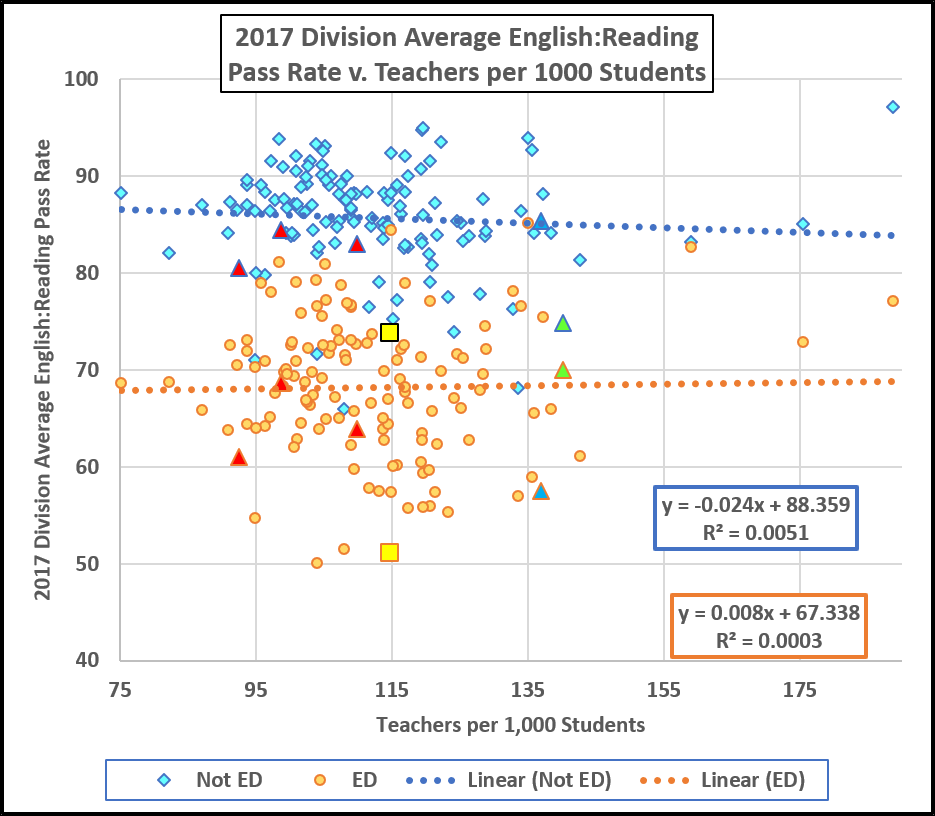A few days ago I addressed the issue of class size in K-12 schools, citing a Campbell Collaboration study claiming that the teacher-student ratio is an insignificant variable in influencing academic outcomes. In support of that finding, I displayed data, compiled by our friend John Butcher at Cranky’s blog, confirming that there is essentially zero relationship between average class in a school district and the average Standards of Learning pass rates.
But there was a loophole in the Campbell Collaboration report that could justify spending more money to shrink classroom sizes in some cases. As I summed up that finding, “While the overall effect is negligible, smaller class sizes have been shown to be more beneficial for students from socioeconomically disadvantaged backgrounds.”
So, Cranky ran another analysis. This time he plotted teachers per 1,000 students against average SOL scores for disadvantaged students and non-disadvantaged students. His conclusion, as can be gleaned from the graph above: “These data reach the same result as the overall pass rate data: Divisions with more teachers per student do not, on average, have better pass rates.” Even for disadvantaged students, the correlation is essentially zero.
If we want to improve K-12 educational outcomes, we need to find a better solution than hiring more teachers and shrinking class sizes.



